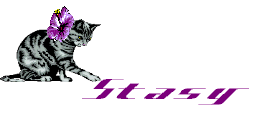


CARL FRANKE: First Berries after Hibernation (CD on Earsnake Recordings)
This release from 2008 features 46 minutes of amiable electronic music.
Gentle electronics are boosted by inventive e-perc, generating a quirky coexistence that is rarely obtrusive and definitely enjoyable.
The electronics harbor a haunting air whose influence invigorates in a subtle manner. Ethereal patterns unfurl to generate a starlit foundation for the sparse embellishment of more agile sounds. These keyboards produce twinkling riffs whose reverberations are crystalline and crisp. While those riffs manifest in a minimal definition, their resonance possesses a lush maturity which is pleasantly entrancing.
Despite the sometimes simplistic nature of the instruments, the results are distinctly expert and bewitching. The melodies cavort with optimism, coaxing smiles from the audience. The use of bass elements is rare, and when it occurs their deep mood is tempered by attendant highs that sparkle in an infectious fashion.
The e-perc flows in a relaxed manner, lending a tasty element of oomph to the drifting tuneage without ever straying into overt distractions. The complimentary quality exhibited by the charming melodies and peppy rhythms is delightful.
These compositions establish a congenial mood that can serve as companionship on lonely nights. The tunes are soft yet engaging, conjuring a cool sanctuary from the hardships of life.

KK: Telescopes (CD on KK Music)
This release from 2008 offers 43 minutes of gentle electronic music.
The electronics employ diverse moods, from fairy tale to dramatic to celestial. A mixture of sober piano with twinkling electric keyboards establishes a union of organic and technical to express the musicís sonic sentiments.
Guitar contributes lilting chords and eccentric effects in support of the overall synthesizer pastiche.
Sturdy percussion provides propulsion for this outer space voyage. Generally, the rhythms are soft and unintrusive, as if heard from a distance. The tempos often imbue the songs with a subtle majesty that is enhanced by an orchestral flair.
Breathy sweet vocals accompany a few of the songs, describing the insignificance of a single entity in comparison to the universe-at-large, while spoken word recitations elaborate on Earthís position in the galaxy.
These compositions form a concept album devoted to mankindís necessity to look beyond our own world for answers that will insure our survival. In the beginning, short instrumentals separate lyrical tunes like brief interludes. As the music progresses, these ambient pieces vanish and the substantial tracks carry on alone, exuding a dreamy disposition designed for comfortable communication of the taleís gist via the vocals.

IAN TESCEE: A Travelerís Guide to Mars (CD on Musicphrenia)
This CD from 2008 features 54 minutes of auspicious electronic music.
Energetic electronics and majestic rhythms sweep the audience into a thrilling excursion to the red planet.
The electronics are powerful and rich with drama. While a bevy of glistening cycles establish a lush sonic tapestry, numerous keyboard-driven riffs supply ingenious direction, achieving a certain nobility seasoned with a sense of awe. There are several occasions in which the keyboards adopt a crystalline sound that almost approximates a childlike star twinkle; in these cases, the tunes are especially attractive. Usually, though, the compositions are august with a feeling of ultimate promise.
Snappy e-perc lends the tuneage a lively status, imbuing the music with a bouncy appeal. The sultry rhythms churn away just beneath the main melodies, present but never dominating.
Guitars are featured, contributing diverse embellishment: mournful in one spot, searingly inspirational in another instance, another time gently strumming deep in the mix.
Synthesized harpsichord and other traditional instruments make appearances throughout the mix, often generating an endearing mood to the songsí ambitious mobility.
One track features vocals which transform it into a progressive rock piece of softly motivational demeanor.
Inspired by the book by W.K. Hartmann, these compositions serve as an excellent tribute to mankindís outbound ambitions. The music is auspicious and rich with dynamic hope.

TL0741: Back to Minus (CD on HC3 Music)
This CD from 2008 offers 50 minutes of abrasive industrial soundscapes.
TL0741 is Pat Gillis (from Northern Machine).
In the initial track, harsh tonalities serve as a foundation for even more abrasive embellishment. Shrill sounds are added to the mix, giving everything an outer space feeling reminiscent of Fifties sci-fi movies. In lieu of melodic structure, this miasma is periodically boosted in volume to give the piece a variation in its nasty flow. Bubbling noises rise amid this mechanical cacophony, lending a hint of respite from the dire circumstances, followed by traces of mellow harmonics--which are swiftly beaten down by a resurgence of industrial noise. No rhythmics are employed.
Subsequent tracks pursue similar motifs in temperament and dissonance. Grinding gears and whirling rotary blades contribute further agitation. Often, the mix becomes so crowded with animosity that the tuneage edges on inducing pain on the listener. If not pain, then at least an overwhelming sense of uneasiness.
These compositions are designed to disturb the psyche, plunging the audience into a realm of machine dominance. No trace of organic character is discernible.

| Entire page © 2008 Matt Howarth. All rights reserved. |
Webpage design by
 |